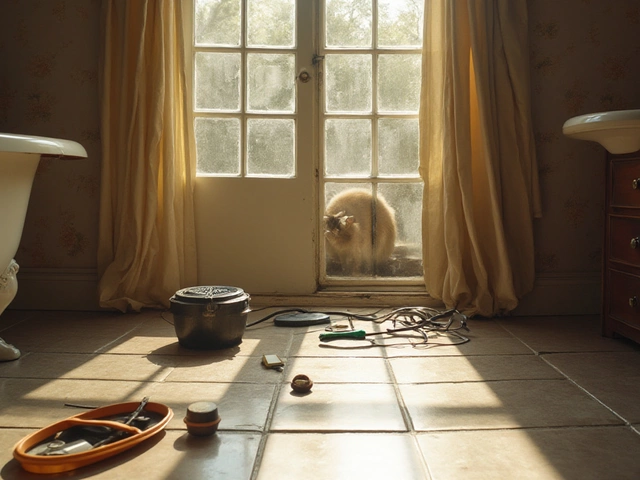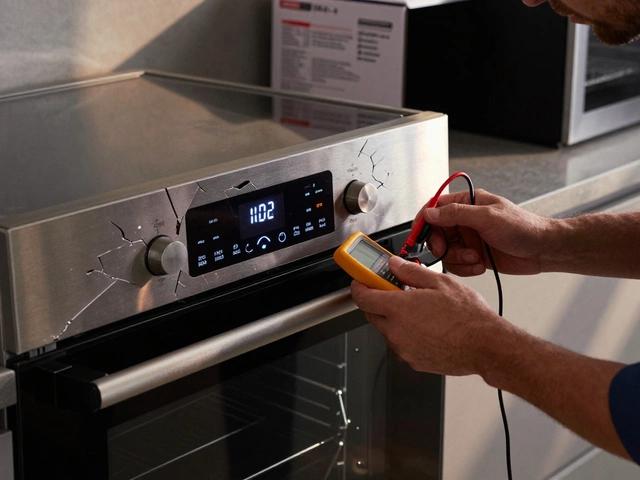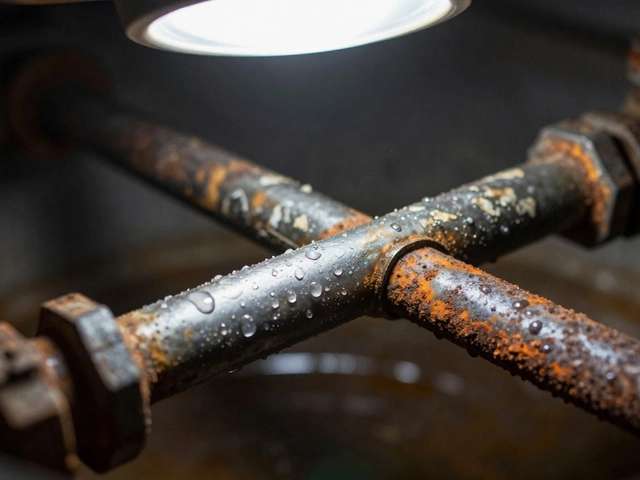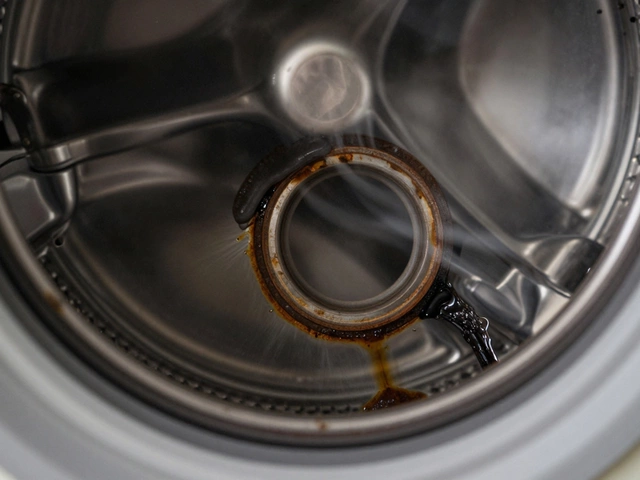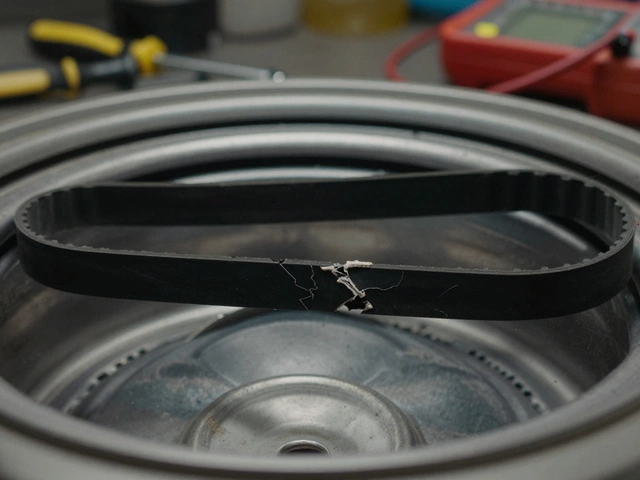Extractor fans quietly serve as the unsung heroes of air quality in our homes, whisking away unwanted moisture and odors with a simple flick of a switch. However, they're not immune to problems, and when they stop working, it can be a real head-scratcher. Don’t worry. With a bit of insight, you can often diagnose and fix these issues before they become too serious.
Understanding why your extractor fan may have stopped working involves looking at various possible culprits. From electrical hiccups to more sneaky blockages, the list of what could go wrong might seem daunting at first. But armed with knowledge, you'll be more than ready to tackle the challenge and keep your fan purred back to its full potential.
While some solutions require a professional touch, many problems can be solved with simple tools and a little patience. Before you know it, your trusty fan will be back in action. Let’s delve into the nitty-gritty of common extractor fan issues and explore straightforward solutions you can try today.
- Understanding Extractor Fan Basics
- Common Reasons Extractor Fans Fail
- Diagnosing Electrical Problems
- Tackling Blockages and Dirt
- Identifying Faulty Components
- When to Call a Professional
Understanding Extractor Fan Basics
Extractor fans are essential components that help maintain indoor air quality by removing unwanted particles from the air. These devices are commonplace in kitchens and bathrooms, where the buildup of moisture, smoke, and odors can lead to unpleasant and sometimes hazardous conditions. The primary function of an extractor fan is to draw air out of a space, channeling it through a vent to the outdoors, thus facilitating better ventilation and reducing moisture levels precisely where it matters most.
The design of a typical extractor fan includes a motor, fan blades, casing, and various mounting accessories. These are usually installed in ceilings or walls and are connected to a duct system. The motor powers the fan blades, creating airflow that helps to ventilate the space effectively. Depending on the make and model, such fans can vary in power, noise level, and efficiency. Understanding the nuances of these components can help us troubleshoot when things don’t quite work out.
One critical factor to consider is the Cubic Feet per Minute (CFM) measurement, which indicates the volume of air moved by the fan per minute. For effective ventilation, a kitchen fan typically ranges from 100 to 300 CFM, while bathroom fans generally have a lower capacity since they serve smaller spaces. Knowing these specifications can guide users in selecting the right fan for their needs, ensuring they have just the right amount of power where needed most. A good rule of thumb suggests venting a fan directly outside to maintain indoor air quality, safeguarding against potential moisture-related damage and ensuring functionality.
"Proper ventilation in homes prevents mold growth and improves air quality," asserts the National Center for Healthy Housing, underlining the importance of regular maintenance.Some modern extractor fans offer advanced features such as humidity sensors, which activate the fan automatically when moisture levels exceed a certain threshold, and timers that allow for precise control, both of which enhance energy efficiency and ease of use. Understanding these features can significantly improve the user experience, allowing individuals to harness the full potential of their extractor fans.
There is also the advantage of energy-efficient models that comply with the guidelines set by the U.S. Department of Energy. These fans use less electricity, reducing utility bills while being environmentally friendly. With awareness on the rise, many homeowners are leaning towards eco-friendly options that deliver both performance and sustainability. Nonetheless, the key to maximizing an extractor fan's life span and performance lies in regular cleaning and prompt attention to any signs of malfunction, keeping them in peak condition.
Common Reasons Extractor Fans Fail
Extractor fans, those unsung champions of ventilation, perform essential tasks by keeping our homes free from excess moisture, unpleasant odors, and improving overall indoor air quality. However, like all mechanical devices, they may run into issues over time. Recognizing and understanding the common reasons they might fail can empower you to address these problems more swiftly, returning the fan to its optimal performance without too much hassle.
One of the primary culprits behind extractor fan failures can be traced to electrical issues. These issues might arise from something as minor as a tripped circuit breaker or a blown fuse. It might also involve faulty wiring, which could be due to wear and tear over the years or even improper installation to begin with. As electrical problems can pose safety risks, handle them with care. Always ensure you turn off power at the circuit breaker before attempting any inspections or repairs. As a wise man once said, "Safety isn’t a gadget, but a state of mind." Consider consulting a reliable electrician if you're unsure about your electrical skills.
Another common issue is blockages, where dust and grease gradually accumulate, obstructing air flow. This grime buildup can impact the fan's blades and motor, causing it to labor under the extra load until it finally gives up. Cleaning your fan regularly can prevent these blockages, maintaining the fan’s efficiency. Even if your extractor is installed in a bathroom rather than a kitchen, soap scum and mold have a tendency to build up, contributing to potential blockages. An occasional thorough cleaning can do wonders—not only for the fan’s longevity but also for the quality of air in your home.
Mechanical components inevitably wear out, leading to the fan failing. Over time, the motor, switch, or bearings may become faulty due to usage or manufacturing defects. A tell-tale sign of a motor issue is unusual noises coming from your fan. If you notice grinding or rattling, it might be time to check if your motor needs a replacement. Fortunately, many spare parts are widely available, and oftentimes, replacing a part is a more cost-effective solution than buying a new unit altogether.
Moisture exposure is another potential enemy of extractor fans, especially those stationed in bathrooms. Humidity can infiltrate the electrical components and deteriorate the wiring, leading to rust and less-than-ideal functioning. Having adequate insulation and regular maintenance checks could help prevent such moisture damage. Moreover, making sure your fan has the correct IP rating for the area it’s located in can significantly reduce this risk.
Lastly, another overlooked but simple reason an extractor fan might fail is a lack of power to the unit itself. Human error or oversight when dealing with power connections can easily be at fault. Before diving into complex diagnostics, checking that the fan is properly plugged in, and the power source is active is an essential initial step. Sometimes, a quick survey of these connections can reveal the problem, saving time and resources.
"Prevention is better than cure," is an adage that holds true with extractor fans as well. Regular maintenance and understanding the cause behind the fan's failure will not only extend its lifespan but also enhance its reliability, ensuring clean and healthy air in your living space.
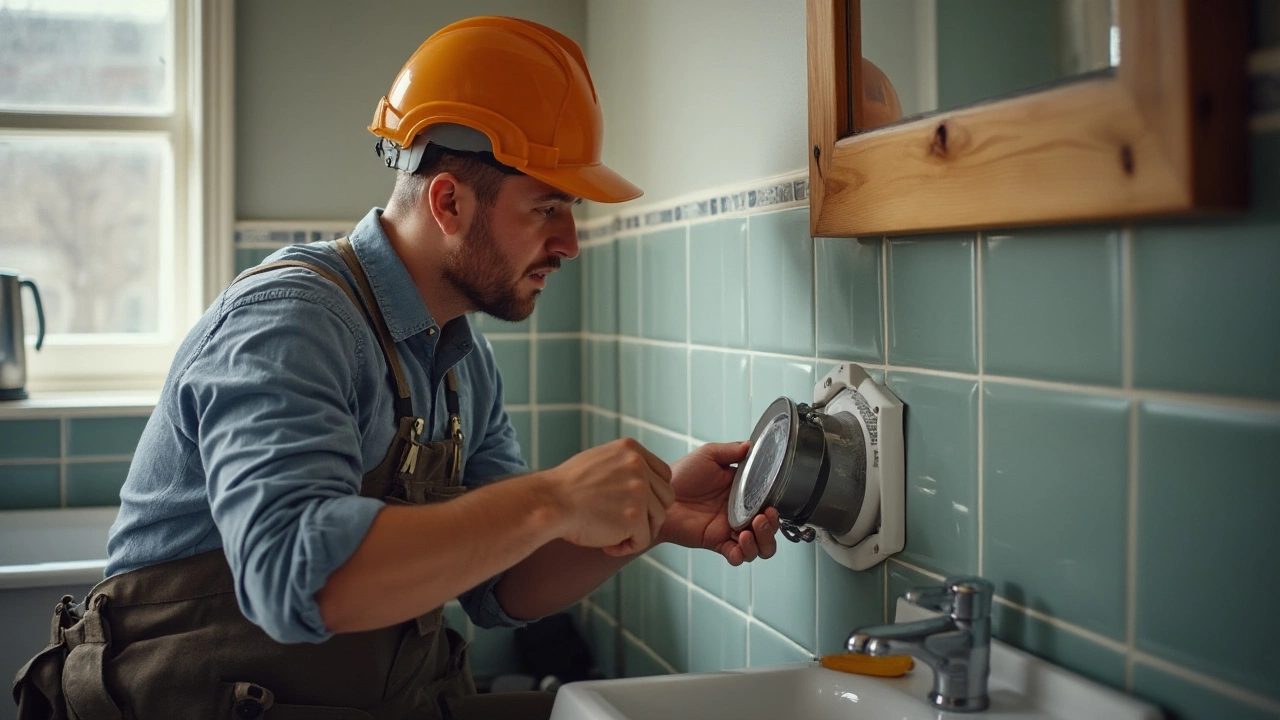
Diagnosing Electrical Problems
When it comes to diagnosing electrical issues with your extractor fan, you're stepping into a world where currents and circuits dance behind the walls. Often, the problem is not as intimidating as it might seem. The most common culprits are blown fuses, faulty switches, or wiring issues that disrupt the fan’s power supply. Before you start pulling wires, ensure your safety by switching off the main power supply. With modern households wired for efficiency and safety, isolating the fan circuit can be the first step in making sure you don't get a surprise jolt.
A suitable place to start is by inspecting the fuse. Much like those tiny soldiers protecting your electronic gadgets from surges, a fuse might blow if there's excess voltage. You can spot this pretty easily by checking if the thin metal filament inside the glass tube is broken. Replacing a fuse is a simple task, but it’s crucial to use one with the exact specifications. Moreover, don’t forget to ensure the switch that controls the fan is in good order. Sometimes, the connection inside can become loose or the switch itself may fail.
"Electricity is really just organized lightning." — George Carlin
Once you’ve tackled these basics, it's time to delve deeper, especially if the problem persists. Wires can become frayed or damaged over time, a particular concern in areas prone to higher moisture levels such as kitchens and bathrooms. Thanks to the structure of home wiring, DIY enthusiasts can often trace a wiring route with patience and maybe a simple multimeter. This tool allows you to check if electricity is reaching the fan motor. If the current doesn’t flow, you may have identified a break in the wiring.
For those interested in a deeper understanding, consider the fan motor, which might be burnt out from overuse or a manufacturing flaw. While not common, motor failure does happen and can be identified by a noticeable and unpleasant burnt smell or complete inactivity. Replacing a motor is more complex and perhaps a job for professionals. Calling an electrician might seem an escalation, but it ensures a safe repair without risk to yourself or your home’s electrical integrity. It's highly recommended if you've exhausted the simpler options and the issue remains unsolved.
| Problem | Solution |
|---|---|
| Blown Fuse | Replace with correct type |
| Faulty Switch | Repair or replace switch |
| Damaged Wiring | Inspect and repair wiring |
Remember that your extractor fan should purr, not sputter or grind. Regular checks and swift action on any troubleshooting extractor fans can keep your air fresh and home safe from electrical mishaps. The journey from diagnosing to repairing an electrical fault can be empowering. It turns an everyday object into something much more fascinating, a Dance of Electrons you might say—in your control all the way.
Tackling Blockages and Dirt
One of the most common reasons for an extractor fan to falter is simply due to blockages and dirt. Over time, an extractor fan, especially in a kitchen or bathroom setting, can accumulate a significant amount of dust, grease, and other particles. These elements can build up and narrow or clog the airflow passage, effectively reducing the fan's efficiency or causing it to stop altogether. It's much like how a vacuum cleaner loses suction when its bag is full. An extractor fan, albeit quieter, shares this same fate when neglected.
Cleaning your fan should become part of your regular home maintenance schedule. It's a straightforward process and mostly involves a few household tools. Begin by safely disconnecting the power to the fan to avoid any accidents. Safety should always come first when dealing with electrical appliances. Next, remove the fan's outer cover. This can usually be done by unscrewing a few screws or popping clips, depending on your model. With the cover off, it's easier to understand how dirt has accumulated.
A soft brush or a vacuum cleaner with a nozzle attachment can be used to gently remove loose dust and debris. Be mindful of any delicate wiring or circuit boards within the fan’s interior. For stubborn dirt, a damp cloth with mild detergent or vinegar can work effectively. Particularly in kitchens, where grease is a more common problem, this method proves invaluable. Let all parts dry completely before reassembling and reconnecting the fan.
Sometimes, blockages occur in the ducting itself. This is the passage that leads extracted air outside your home. Over extended periods, this ducting can harbor all sorts of blockages, from animal nesting to bits of insulation that have come loose. If safe and accessible, a similar cleaning regime should be applied, but it's usually better to leave duct cleaning to professionals if the pathway is complex or challenging to access. Regular maintenance here not only ensures your fan runs efficiently but also prolongs its life.
To understand how effectively your cleaning efforts might pay off, consider that even a small increase in obstruction across the fan blades can lead to a power efficiency loss up to 30%! Not only can this spike your energy bills, but it also causes the fan to work harder than it needs to. The cost of attending to this kind of maintenance is almost always less than replacing the unit (not to mention the peace of mind knowing your air quality is back on track).
Industry experts often stress the importance of keeping fans clean. As noted by one seasoned technician, "A clean fan is a happy fan. Regular upkeep is less about aesthetics and more about preserving performance and safety – something every homeowner should take seriously."
Your family will breathe cleaner air with a little bit of preemptive care, which the smallest of upkeep can ensure.
The balance of maintaining your extractor fan and keeping it in pristine working order is a task easily underestimated. However, by devoting some time to tackle blockages and dirt buildup, you enhance the functionality and longevity of your appliance. The unseen air in your home will improve, allowing for a healthier environment and freeing you from those pesky extra dustings that accumulate due to insufficient ventilation. Ultimately, cleaning is one maintenance task that's totally worth getting on top of.
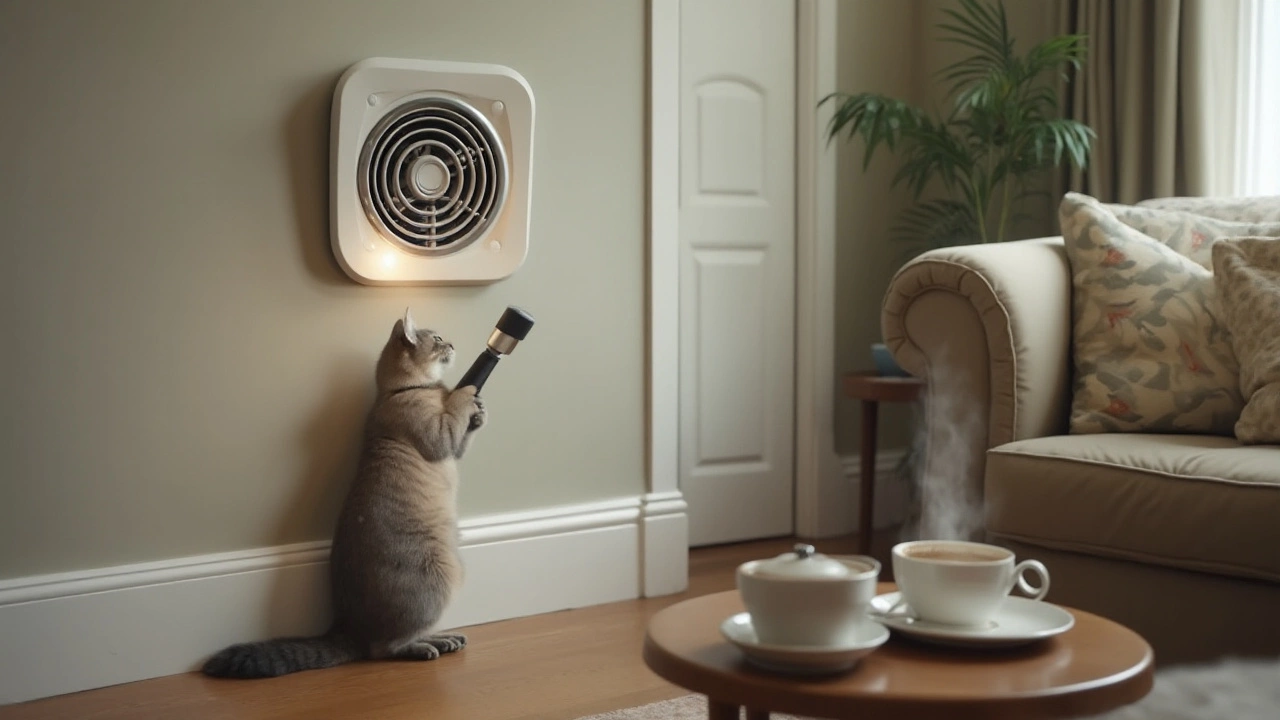
Identifying Faulty Components
When an extractor fan falters, the problem might lie within its components. Wearing of parts over time is natural, but recognizing these signs early can aid you in acting promptly. Let’s dive into the mechanism to pinpoint those faulty components causing your extractor fan to stop working. The motor is typically the heart of an extractor fan, laboriously working to keep it effective. If you're noticing a reduction in suction or excessive noise, chances are the motor might be struggling. Additionally, consider the blades; they're critical in directing airflow and get worn out with prolonged use.
Another common component that often flies under the radar is the capacitor. These small, but mighty pieces are vital for initiating and maintaining motor operation. A common sign of a faulty capacitor is the fan not starting at all or running slow with annoying humming. Similarly, switches and wiring, though small, play a massive role. Inspecting these for signs of wear, such as charring or brittleness, can help rule out potential electrical faults. A simple multimeter can be invaluable in these cases, allowing you to check for continuity or breaks in the circuit.
And let’s not overlook sensors and timers; technology gifts us with convenience, but it can also be a source of malfunction. These are especially prone to board issues, where even a tiny defect might throw off the entire system. Regular maintenance checks while looking out for software updates can often preclude bigger headaches. As eminent engineer Henry Petroski famously observed,
“Failures are not just those dangers expected, but surprises that were unforeseen.”Knowing these failures helps prioritize prevention measures to keep your home ventilated and fresh. Sometimes, understanding the intricacies of these informative tasks requires professional help. Employing expert advice during confusion can speed up the corrective process, seeing to it that your fan returns to its excellent working condition without avoidable hitches.
When to Call a Professional
At times, it can be tempting to tackle every issue at home on your own, especially if you're a hands-on problem solver. However, knowing the right time to call a professional can save you both money and time in the long run. If your beloved extractor fan has ceased functioning and you’ve exhausted your self-help repertoire without success, it might be time to seek out an expert. Take electrical issues, for example—a misstep here can lead not just to more damage to your fan but potentially introduce hazardous elements to your home environment. Professional electricians are trained and experienced in safely handling wiring problems and ensuring everything meets standard safety codes, which is a level of peace of mind you don't get from DIY fixes.
Mechanical failures often spell the need for professional intervention as well. If you notice strange noises like grinding or squealing, it could indicate that internal components are worn out and malfunctioning. A professional technician can accurately assess the type of motor or mechanical component your extractor fan employs and determine if repairs or replacements are necessary, sometimes saving parts that a layperson might decide to throw away prematurely. Attempting these repairs yourself without the proper tools or expertise can not only be risky but might also void warranties, turning a small problem into a costly mistake.
Complicated installations or replacements should also lead you straight to a professional. When upgrading to a more advanced model or needing to install a new exhaust line, this is beyond routine maintenance or minor tweaks. An experienced contractor ensures that the new system is correctly fitted to your home setup, avoiding potential pitfalls such as improper venting or inefficient airflow. They can also advise on the best models to suit your specific needs, optimizing your home’s ventilation system to keep it running smoothly.
According to the Home Ventilation Institute, "Proper installation is critically important for indoor air quality... modification without expert guidance can lead to reduced efficiency and increased risk of system failure."
Additionally, professionals will have access to advanced tools and diagnostic equipment that aren’t typically available to the average homeowner. This equipment allows them to pinpoint issues that might escape a careful amateur inspection. In cases where fan performance has gradually decreased over time without clear reason, professional evaluation might reveal subtle issues like wiring degradation or unnoticed blockages deep within the system.
Finally, if safety is ever a concern—for instance, if your home ventilation seems compromised or you smell burning materials when switching on the fan—don't hesitate to call for expert help immediately. Safety should always be the top priority, and trained technicians can quickly assess whether your situation poses a risk that needs immediate attention and remediation. Choosing to involve a professional at the right time not only protects the investment you've made in your home but also ensures it remains a safe space for you and your family.



